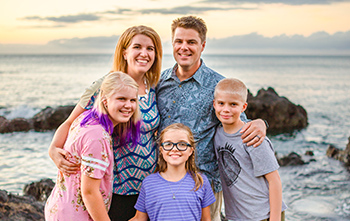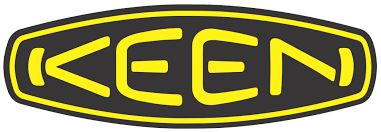.jpg) After evaluating our needs, and figuring out what I don’t know about installing solar, we sought for recommendations for a professional installer. We began conversations that started good, and gradually got worse and worse. This happened while I was camping just next door to Dave Zimmerman in the middle of the Mojave Desert. Dave happens to have nearly the exact setup I was considering, so took a peek under his couch to study the wiring a bit.
After evaluating our needs, and figuring out what I don’t know about installing solar, we sought for recommendations for a professional installer. We began conversations that started good, and gradually got worse and worse. This happened while I was camping just next door to Dave Zimmerman in the middle of the Mojave Desert. Dave happens to have nearly the exact setup I was considering, so took a peek under his couch to study the wiring a bit.
After a bit of reading and conversation, I’ve determined to try and install this all myself. It will save some cash, allow us to control our own schedule, and I can be sure it is done in a way that I’m pleased with. I’ve mailed the panels to a willing friend in Arizona, and we’ll do the install at his house. The install seems to fit in 3 distinct phases, with the ability to ‘pause’ in between each.
Phase 1: Rooftop work
In this phase, I’ll attempt to do all the roof-top work. I’m going to mount the panels using the crazy sticky 3M tape that AM Solar ships with the kits. After mounting, I’ll use some lap sealant around the mounting point to protect the adhesive from the elements. I’m installing 3 135 watt panels, one in each corner of the Airstream, skipping the corner with all the antennas.
I’m going to use a fridge vent combiner box, and run the wires down behind the fridge and into the under closet space. Each panel will need to be wired to the combiner box, and there is some wire work on each panel as well that involves crimping and some heat-shrink tubing. I’ll need to pull the fridge to run the wire down from the fridge vent, but I’ve done that twice before, and the last time I didn’t even empty it!
At the end of this phase, I’ll have panels on the roof, and wire down inside the house. Taking care to keep the end of the wire wrapped and insulated, I can pause here, leaving the coil of water under the wardrobe.
Phase 2: Wire run
Nearly all of the wiring needs to be joined together at the front of the Airstream, as close to the batteries as possible. The main wiring panel is under Cara’s bed, so I’ll need to get the wire from the panels run forward to that space. From under the wardrobe, I’ll use an existing wire chase that runs under the floor to thread the wire across the hall and up behind the wiring panel. I’ll then run the wire past the hot water heater, behind the bathroom lower cupboards, along the wall underneath one of the front kids beds, and into the wiring space.
In addition to the wire from the panels, I’ll need to add the remote wires that connect to the BlueSky control panel. I’m mounting this in the kitchen cabinet, located conveniently above the wiring panel. I’ll cut a hole in the cabinet, and run the two control wires down to the floor to join the wire bundle before it heads back past the hot water heater. There are two small wires to run: one is the control wire from the solar charge controller, and the other is the sensor wire from the battery monitoring shunt that will allow accurate measurement of battery use and charging. I’ll install the controller into that hole as well, though it won’t be connected to anything till the next phase.
While I’m doing this run, I’m going to run a length of romex AC wiring cable from behind the electrical panel to the forward space as well. While I’m not going to use this wire now, it will come in handy if I add an inverter and wire it to the house outlets.
That bundle will be secured and wrapped when exposed to protect it during it’s run. At the end of this phase, I can leave the still carefully isolated wires wrapped underneath the forward bed.
Phase 3: Wire it up!
This is the most interesting phase of it all, as it contains the most unknown issues. I’ll need to rewire the house wiring in a few specific ways to connect the solar and monitors.
First, I’ll need to re-arrange all the electric pieces placed by Airstream. This will allow some more room for the additional components I’ll be installing. I’ll mount the BlueSky charge controller in the newly available space. The solar wires will be wired first to a cutoff switch, and then to the charge controller. I’ll connect one remote cable from the control panel there as well, and add the battery temperature monitor cable as well.
I’ll be rewiring the house wiring so that the negative battery connection is run through the monitoring shunt. I’m going to attempt to do a clean, full install there, including rewiring the electric jack behind the shunt as well. This will allow for a full system monitor to capture and understand ALL of my power use and charging activity. This job might be the most time consuming, as there are lots of wires to adjust and reroute. The final bundle will need to be re-protected on it’s route from the battery box into the wiring panel. That shunt will be connected to the monitoring cable that was placed in phase 2.
The difficulty of this task is aided some by the wiring diagrams that I’ll receive with my solar kit from AM Solar. I’ve seen the diagrams already, and they are clear and easy to follow. If this part of the installation goes south, I’ll locate an automotive electrician to help me clean it up and get it working properly.
Am I crazy?
Possibly, but I’ll learn plenty during the process, and I’ll surely end up with some interesting stories to tell. I’m planning to do one phase each day, with some (paid) work in between. I’ll need to do almost everything during the day, so the kids have a place to sleep at night. If needed, I can pause for a few days between phases to normalize and take care of stuff.



















[…] My Plan for Self Installing Solar Panels Drop-in Multi-State Converter Upgrade Solar Power Install Part I – Panel Mounting Solar Install Part II – Self-Install Combiner Box Solar Power Install Part III – Self Install Running Wire Solar Install Part IV – The Wire Panel Adding Bigger Batteries Installing a 2000 Watt Pure-sine Inverter Automatic Transfer Switches Cost Breakdown […]